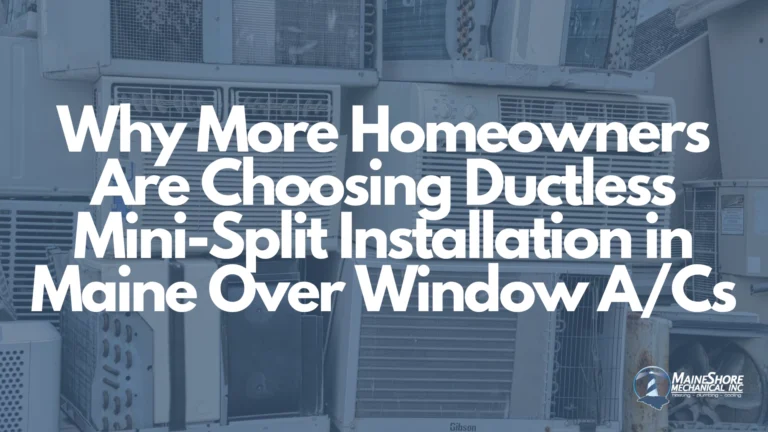Explainer: Zoning Systems in HVAC
Zoning systems in HVAC (Heating, Ventilation, and Air Conditioning) offer a sophisticated approach to controlling temperature and airflow within different areas or zones of a building. This blog post aims to provide a comprehensive understanding of zoning systems, their benefits, installation process, and their impact on energy efficiency.
What are Zoning Systems in HVAC?
Zoning systems divide a building into multiple zones, each with its thermostat and damper controls. These systems enable personalized climate control for different areas, allowing occupants to set temperatures independently, enhancing comfort, and minimizing energy wastage.
Benefits of Zoning Systems
- Energy Efficiency: Zoning systems optimize heating and cooling, reducing energy consumption.
- Enhanced Comfort: Tailored temperature control in various zones meets occupants’ specific preferences.
- Cost Savings: Efficient usage leads to lower utility bills and prolonged HVAC system lifespan.
How Zoning Systems Work
Zoning systems utilize dampers within the ductwork, controlled by individual thermostats or a central control panel. When a particular zone needs heating or cooling, the dampers adjust airflow, directing it to that zone, ensuring precise temperature regulation.
Types of Zoning Systems
- Single-Zone Systems: Control temperature for the entire building as a single zone.
- Multi-Zone Systems: Divide the building into multiple zones, each with individual controls.
Installation Process
The installation involves zoning panels, dampers, thermostats, and control wiring. Professional installation ensures proper zoning, optimizing system performance.
Importance of Zoning Systems for Energy Efficiency
By heating or cooling only required zones, these systems prevent overworking HVAC units, resulting in energy savings and reduced wear and tear.
Challenges and Considerations
- Initial Cost: Installation expenses can be higher initially.
- System Compatibility: Ensuring compatibility with existing HVAC systems might be necessary.
- Professional Installation: Expert installation ensures proper functionality.
Maintaining Zoning Systems
Regular maintenance involves checking dampers, thermostats, and control panels for optimal performance.
Conclusion
Understanding zoning systems is essential for maximizing comfort and efficiency in a building’s HVAC operations. Proper installation and maintenance ensure optimal performance and cost-effectiveness.
Delve deeper into the world of HVAC zoning systems with our latest blog post! Uncover the transformative benefits and insights to optimize your home’s comfort. Read more: [Blog Post Link]
For more HVAC expertise and updates:
- Connect with us on Facebook: www.facebook.com/MaineShoreMechanical
- Follow us on Instagram: www.instagram.com/maineshore_mechanical/
Stay connected and informed with MaineShore Mechanical! Enhance your home’s efficiency and comfort with our expert insights
FAQ on HVAC Zoning Systems
What are Zoning Systems in HVAC?
Zoning systems are HVAC solutions that divide a building into multiple zones, each with its thermostat and damper controls. These systems enable personalized climate control for different areas, offering independent temperature settings to enhance comfort and minimize energy wastage.
What are the Benefits of Zoning Systems?
- Energy Efficiency: Zoning optimizes heating and cooling, reducing energy consumption.
- Enhanced Comfort: Tailored temperature control in various zones meets occupants’ specific preferences.
- Cost Savings: Efficient usage leads to lower utility bills and prolonged HVAC system lifespan.
How Do Zoning Systems Work?
Zoning systems use dampers within the ductwork, controlled by individual thermostats or a central control panel. These dampers adjust airflow to specific zones when heating or cooling is needed, ensuring precise temperature regulation.
What Types of Zoning Systems Exist?
- Single-Zone Systems: Control temperature for the entire building as a single zone.
- Multi-Zone Systems: Divide the building into multiple zones, each with individual controls.
What is Involved in the Installation Process?
Installation includes zoning panels, dampers, thermostats, and control wiring. Professional installation ensures proper zoning, optimizing system performance.
Why are Zoning Systems Important for Energy Efficiency?
By heating or cooling only required zones, these systems prevent overworking HVAC units, resulting in energy savings and reduced wear and tear.
What Challenges and Considerations Exist?
- Initial Cost: Installation expenses can be higher initially.
- System Compatibility: Ensuring compatibility with existing HVAC systems might be necessary.
- Professional Installation: Expert installation ensures proper functionality.
How Should Zoning Systems be Maintained?
Regular maintenance involves checking dampers, thermostats, and control panels for optimal performance.



